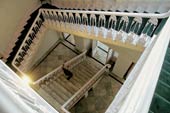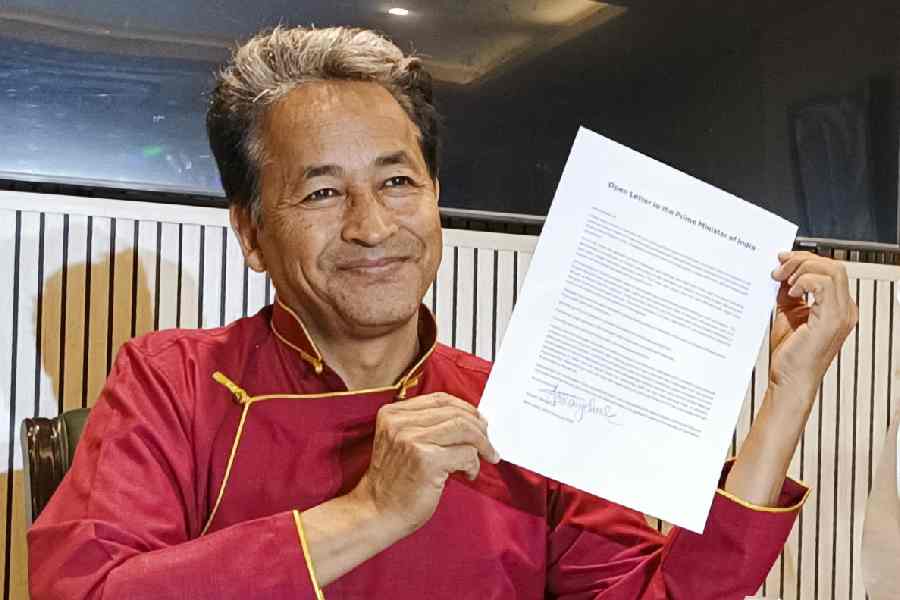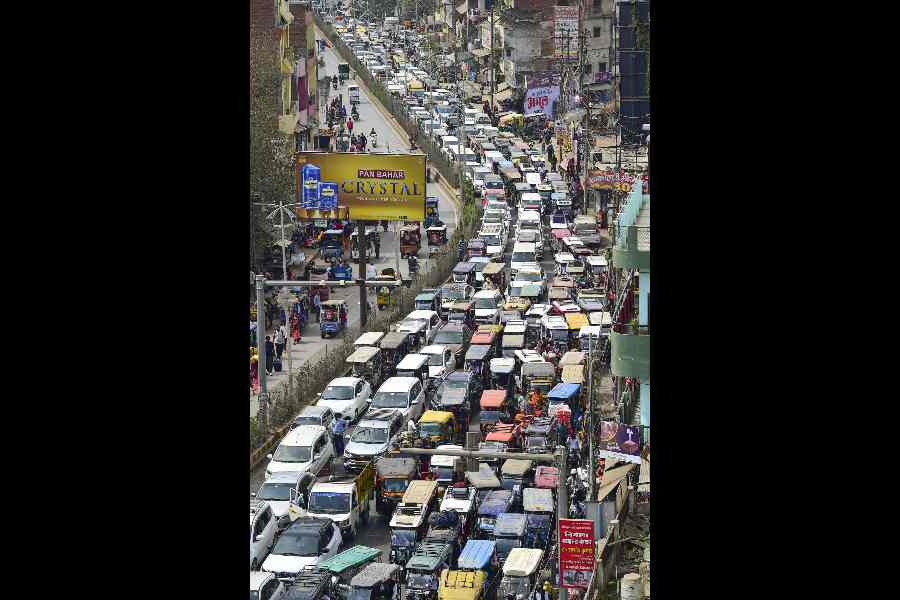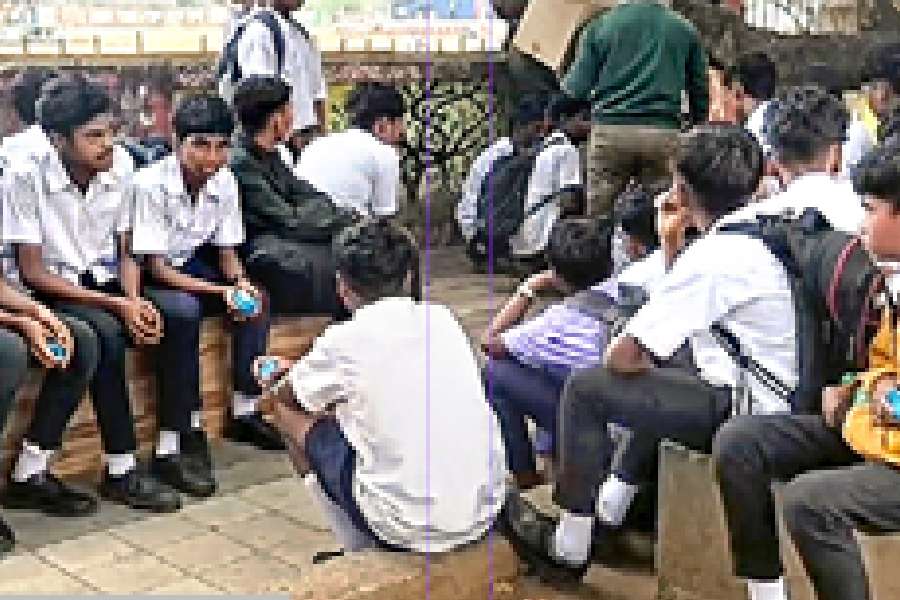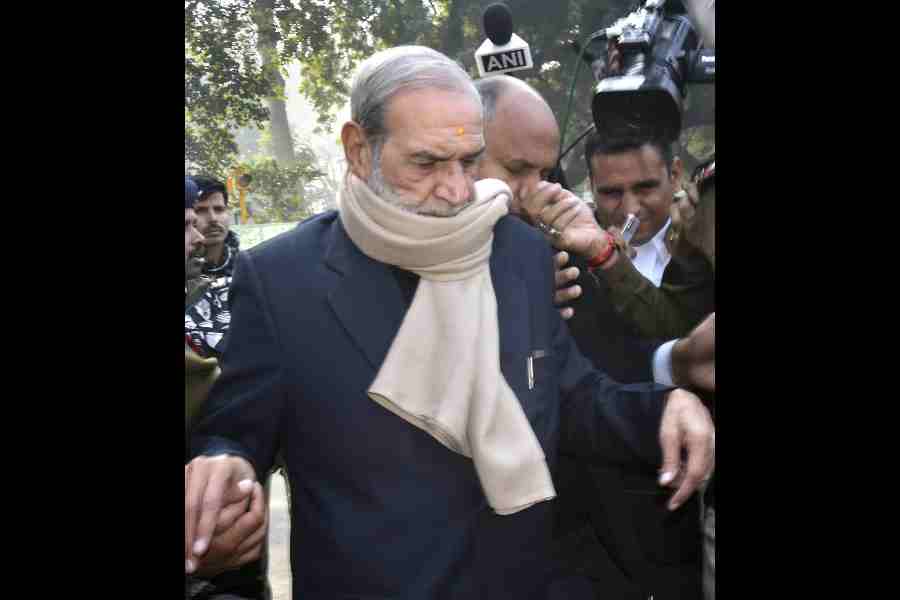 |
| The perfectly preserved staircase of the house at 11 Rawdon Street. Pictures by Bishwarup Dutta |
When old buildings bite the dust in this city, they meet their expected fate. When they are still going strong we can’t help wondering by what miracle they have survived.
Like most streets here, Rawdon Street, too, is dying a fast death by concrete. Ungainly apartment blocks and shops have swept aside the bungalows, the tank and park in Auckland Square was concreted over years ago, and the trees along the pavements stand the risk of being felled at anybody’s whim.
The house at 11 Rawdon Street stands out amidst this concrete desert. As the old durwan throws open the gates of 11 Rawdon Street, one gains access into a world of grace and privilege that one would have thought time had swallowed long ago.
But the porch, the gleaming marble staircase and the milk white wooden stairs that lead one to the second floor of the building are real enough. The living and dining rooms are appointed with all the accoutrements of gracious living such as paintings, family photographs, carved furniture and carpets laid out on the gleaming red floor.
The Bhagat family has occupied this mid-19th century bungalow since February 1934, and they have showered much love and care on this grande dame.
It is strange how these rarefied, old buildings and their occupants seem to rub off their characters on each other. Gopal Krishna Bhagat and his wife Roma are both in their 80s but their upright carriage, comfortable but smart clothes and engaging conversation do not betray any sign of age.
Gopal Krishna’s father, Madan Gopal, was from Delhi and was in charge of Gwalior Potteries that belonged to the Scindia family. Gopal Krishna was born in Scindia Villa in the wild countryside then. In Calcutta, Madan Gopal took over Bengal Potteries whose factory was in Tangra, from an Englishman, Colonel Peart, says Gopal Krishna. It became a blue-chip company under the Bhagats. The decline began in the 1965 and it closed down in 1994.
 |
| Gopal Krishna Bhagat and his wife Roma in their first floor living room |
G.M. Kapur, the state convener of Intach, after a visit to this building, that used to belong to the Gooptu family till some time ago, took it upon himself to find out who its occupants were.
With some help from a friend in London who accessed the India Office Library and tracked various publications, including Thacker’s Indian Directory, websites and maps (of 1857 in particular at Goethals Library in St Xavier’s College), he discovered that there was no building on the plot between Theatre Road and Moira Street.
Hence “it can be safely assumed that construction took place between 1857 and 1874. Also, it can also be assumed that No. 3 Rawdon Street was what is now No. 11 Rawdon Street”. He has been able to draw up a list of the occupants of the building, and the most distinguished of them was Henry Elmsley Busteed who had authored Echoes from Old Calcutta: Being Chiefly Reminiscences of the Days of Warren Hastings, Francis and Impey published in 1888.
Although the building looks sad from outside with peeling plaster and little evidence of whitewash, it is lovingly preserved inside. The Bhagats say the building has undergone few changes, save the two rooms built on the garage, and the balconies on both floors that were blocked off with glass plates. With its cushioned chairs these spaces are ideal for lounging.
The louvres were retained though, and so were the original columns and wooden beams. Structures have been constructed on the lawn, and apartment blocks have come up in place of its sister buildings adjacent to it.
The recent history of the building is interesting enough. Over the years, the Bhagats have received many distinguished guests and visitors. Dr BC Roy was their family physician. Acharya Prafulla Chandra Ray came for board meetings and Gopal Krishna remembers opening the door for the bearded and dhoti-clad scientist.
Aruna Asaf Ali was given shelter here when she went underground. Vijay Lakshmi Pandit, Shyama Prasad Mukherjee, Kanan Debi, Uday Shankar, General Ayub Khan and Harendra Coomar Mookerjee, then governor of West Bengal, were among the well-known visitors. The maharaja of Indore had brought a cricket team that included Colonel C.K. Naidu, Mushtaq Ali and Ishtaq Ali and Lala Amarnath.
Gopal Krishna remembers the day when the 1946 riots erupted, Park Circus was in flames and they had to keep night vigil on the terrace.
What saved them was the neighbouring building where lived Surawardy, prime minister of Bengal then. “The rioters could never approach that house. I remember the parties he would throw for the goras,” says Gopal Krishna. Calcutta burnt while the white ladies danced. This building too is gone.

